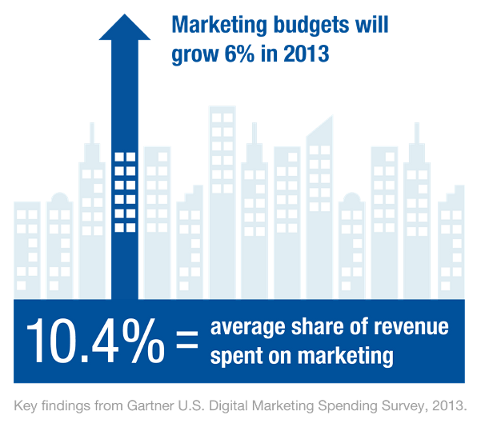If you’ve been online anytime in the last 2 years, you may have heard of a little thing called content marketing. It’s the latest buzz word in the digital marketing space and with good reason. Brands are using content to engage with their buyers like never before.
The buyer’s journey has changed and that change is forcing organizations to redefine the role of marketing in the sales process. Modern buyers are no longer dependent on your employees to get information on your company. Instead they’re doing research online and making decisions without asking for your input. In fact, according to a recent study by the Corporate Executive Board, buyers go through about 57% of the purchasing process before ever talking to sales.
 That means that marketing has a much larger role to play in generating conversions and revenue than ever before. If your buyers are going online to research solutions, it’s marketing’s job to make sure that they find your brand.
That means that marketing has a much larger role to play in generating conversions and revenue than ever before. If your buyers are going online to research solutions, it’s marketing’s job to make sure that they find your brand.
Many organizations have taken note of this new trend and are responding with increased investment in marketing. Gartner recently surveyed 253 marketers about their budgets and found that companies are spending more on marketing than ever before. Here are few of the most interesting findings from that report:
Organizations spent an average of 10.4% of their revenue on marketing activities last year, and marketing budgets are expected to increase by 6% in 2013.
Almost all the marketers surveyed said that their organization intended to either increase their marketing budget or keep it the same. Less than 10% said they expected their budget to decrease. Modern marketing allows brands to build relationships with their buyers, which means that they already know and trust your organization well before they talk to sales. That makes sales’ job a lot easier, but it also means that marketing needs more resources to manage increasingly complex, multi-touch campaigns, and reach buyers in all their preferred channels.
Digital Marketing accounted for 2.5% of company revenue in 2012 and is expected to increase by 9% this year.
By far the fastest growing area of marketing is digital marketing. The days where companies could afford to not be online or have only a minimal presence are over. Buyers are online, so brands have to be there, too, if they want to be found. The marketers surveyed reported that digital marketing expenses made up between 10-50% of their total marketing budgets, with the average being around 25%. Interestingly, this statistic is getting harder to measure as traditional and digital marketing techniques are merging. Over 20% of organizations reported that they no longer separate budgets between digital and traditional techniques.
28% of marketers have reduced their advertising budget to fund more digital marketing.
Traditional advertising may not be going anywhere yet, but it’s clear that it is no longer the top priority for a lot of organizations. Modern buyers are exposed to an exponentially increasing number of advertisements every day. And that means it’s harder and harder to get their attention. That’s why brands are beginning to turn to permission-based forms of marketing, where the goal is to draw leads in by appealing to their interests and pain points, rather than blasting them with messages driven by your organization’s agenda.
Corporate websites, digital advertising, and social marketing are the online activities most important for marketing’s success.
Corporate websites tied with digital advertising for the top activity driving online marketing success. That means that while social media is a powerful channel, it won’t be replacing your brands’ website any time soon. Marketers should make sure to keep optimizing their websites, including updating it regularly with compelling content. Having dynamic, interesting content on your site that appeals to your buyers is a great way to engage with them and encourage them to keep coming back for more.
Content creation and management now claim the second largest share of digital marketing budgets.
When it comes to how brands are spending their digital marketing budgets, online advertising is still on top, claiming around 12.6% of the budget. But spending on content marketing is steadily increasing. In 2012, content accounted for 11.6% of digital marketing budgets on average. Expect to see that number go up in the future. Many of the marketers surveyed reported that content creation and social marketing were among their top priorities for 2013.
As new technologies impact the buying cycle, marketers will need to stay agile. More of the burden of leading customers through the sales funnel is falling on marketing, and organizations will need to increase their investment in marketing activities to compensate.
So marketing clearly deserves that budget boost, and now it’s time to think about what you’re going to do with all those new resources. Shifting from traditional advertising channels to interactive, relationship-focused marketing can very challenging. Michael Brito, Senior VP of Edelman Digital, recently shared his thoughts on this difficult process in his talk, “Transforming Your Brand to a Media Company.” Check it out to learn more about the changing marketing landscape, and how your organization can make the transition to a digital marketing strategy.

